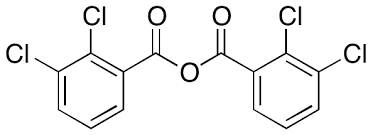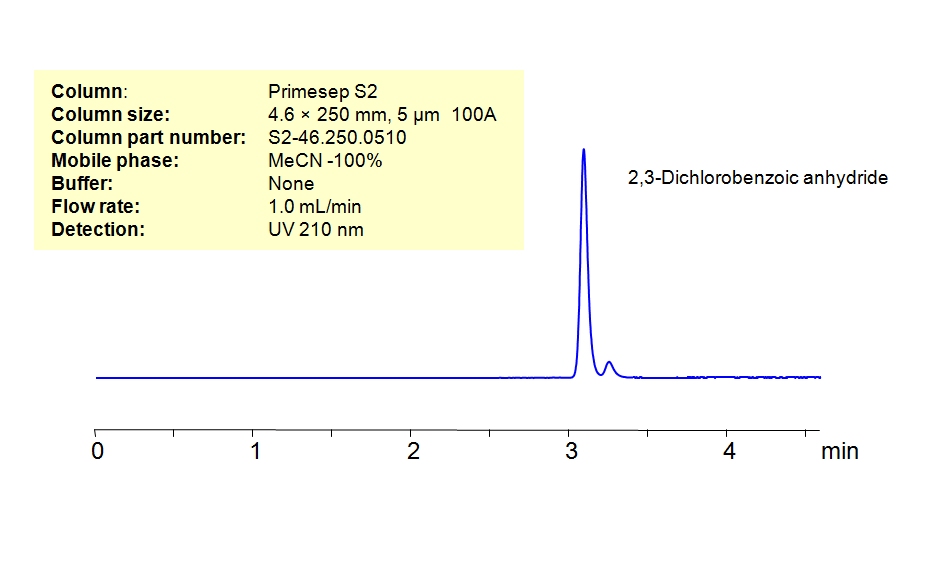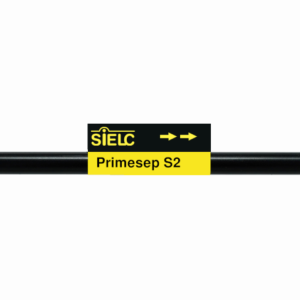| CAS Number | 252186-80-4 |
|---|---|
| Molecular Formula | C14H6Cl4O3 |
| Molecular Weight | 364.0 |
| InChI Key | PQQZYNVQDUZLTQ-UHFFFAOYSA-N |
| LogP | 5.7 |
| Synonyms |
|
Applications:
HPLC Method For Analysis Of 2,3-Dichlorobenzoic Anhydride on Primesep S2 Column
February 4, 2022
Separation type: Liquid Chromatography HILIC
High Performance Liquid Chromatography (HPLC) Method for Analysis of 2,3-Dichlorobenzoic anhydride
2,3-Dichlorobenzoic Anhydride is an impurity formed during the production of Lamotrigine, anticonvulsant used to treat epileptic seizures and Bipolar Disorder. Removing 2,3-Dichlorobenzoic Anhydride is paramount for maximizing Lamotrigine purity. 2,3-Dichlorobenzoic Anhydride can be retained and analyzed on a mixed-mode Primesep S2 column with a mobile phase consisting of just Acetonitrile (MeCN) without water or a buffer. This analytical method can be UV detected at 210 nm with high resolution and peak symmetry.
| Column | Primesep S2, 4.6×250 mm, 5 µm, 100A |
| Mobile Phase | MeCN- 100% |
| Buffer | No |
| Flow Rate | 1.0 ml/min |
| Detection | UV 210 nm |
| Class of Compounds | Anhydride |
| Analyzing Compounds | 2,3-Dichlorobenzoic anhydride |
Application Column
Primesep S2
The Primesep family of mixed-mode columns offers a wide variety of stationary phases, boasting unprecedented selectivity in the separation of a broad array of chemical compounds across multiple applications. Corresponding Primesep guard columns, available with all stationary phases, do not require holders. SIELC provides a method development service available to all customers. Inquire about our specially-tailored custom LC-phases for specific separations.
Select options



